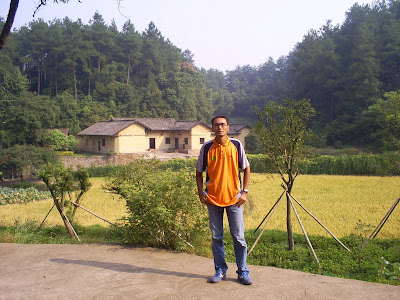
The female menopause subjects women to a host of unpleasant effects, some of which come and go while others, like osteoporosis, progress silently and steadily. They are attributed to the permanent decrease of estrogen in the body, but that does have at least one benefit - cessation of the menstrual cycle. The unpredictable symptoms of the menopause include hot flushes, which can persist erratically for up to five years, night sweats, insomnia and joint pain.
The standard treatment of menopausal symptoms is hormone replacement therapy. This replaces the lost estrogen, which is actually a combination of three distinct compounds (estrone, estradiol and estriol), with a combination of estrogen and progesterone. However, the therapy can produce its own side effects, such as weight gain, water retention, irritability and depression, while long-term use increases the risk of breast cancer, endometrial cancer, deep vain thrombosis and stroke.
Unsurprisingly, many women have been looking for alternative treatments and soy extracts have become a major player in the market. They contain natural plant hormones which might possess estrogen-like properties but the research in this area has so far been inconclusive.
One comprehensive study in the USA concluded that a phytoestrogen-rich soy supplement reduced the severity of hot flushes by 50% but the placebo group enjoyed a 35% decrease. However, the frequency of the hot flushes was not reduced at all. A separate review of 12 studies with soy and soy extracts suggested that they might have a modest effect in reducing hot flushes, commenting that "foods that contain phytoestrogens show promise for the treatment of menopause symptoms."
Encouraged by the apparent benefits, many companies have brought soy-based products to the market. Unlike drugs, these "natural" remedies can escape the attentions of national regulatory institutes, so their own side effects have not been fully examined. Despite large sales volumes, there is currently limited data available on their safety.
One key factor in any safety test is the content of the active ingredients, which are presumed to be isoflavones such as daidzein, genistein and glycitein and their respective glycosides. There are numerous published methods for determining these compounds in soy extracts but they do not apply fully to a new preparation that has been launched. This has an added ingredient, melatonin, for treating insomnia.
Melatonin is a natural hormone secreted by the pineal gland that controls the circadian rhythm which governs our sleep patterns. It has been on the market as a sleep adjuster to help overcome jet lag and has now made its way into a new formulation, produced in Italy, for alleviating some menopausal symptoms.
Ideally, for quality control, one method should be available for all ingredients of a product, so Italian scientists from the University of Bologna have investigated the suitability of HPLC and micellar electrokinetic chromatography (MEKC) for the new product. Maria Augusta Raggi and colleagues began by analysing standard solutions before transferring the method to the product itself.
They analysed melatonin and the main isoflavones which were daidzein, genistein, glycitein and the glucopyranosides of daidzein and genistein. Folic acid, clozapine and quetiapine were used as internal standards. The contents of the commercial capsules were extracted with aqueous methanol and the supernatant was retained.
For MEKC with diode array detection, the supernatant was diluted further with aqueous methanol and the optimum background electrolyte was basic carbonate buffer (pH 10.3) in methanol containing sodium dodecyl sulphate. Complete separation was achieved within 15 minutes with a capillary 63.5 cm long. The MEKC linearity was good and the detection limits ranged from 0.5-1.6 µg/L for the isoflavones to 3.3 µg/L for melatonin.
Turning to the HPLC separation, the researchers tested two detectors. In the first, a C18 column was used with an acetonitrile-acidic phosphate buffer (pH 3.0) and UV detection. The analytes were resolved within 14 minutes with detection limits of 0.1-0.5 ng/mL for the isoflavones and 1.0 ng/mL for melatonin.
The second HPLC method used the same column and mobile phase, with amperometric detection at an oxidation potential of +0.8 V. The detection limits were similar to those from UV detection, at 0.1-0.3 ng/mL for all six analytes.
The three methods gave total capsule contents for the five isoflavones of 80.5, 81.5 and 81.1% of the declared levels for MEKC, HPLC-UV and HPLC-ED, respectively. This corresponded to 32.4 mg/capsule, compared with the declared 40 mg. The difference was attributed to the presence of minor isoflavones that were not included in the method.
The calculated contents of melatonin were 95.3, 97.1 and 96.2%, respectively, of the declared levels, corresponding to 4.81 mg/ capsule, very close to the stated level of 5 mg.
So, the methods gave similar results to each other for the capsules and appear to be equally suitable. However, the much higher sensitivities of the HPLC methods make them more suitable for the analysis of melatonin and the isoflavones in the blood of patients, which are the subject of ongoing studies by the research group.
Related links:
Journal of Separation Science 2008, 31, 1851-1859: "Comparison of analytical methods for the quality control of a new formulation containing soy extract and melatonin"













